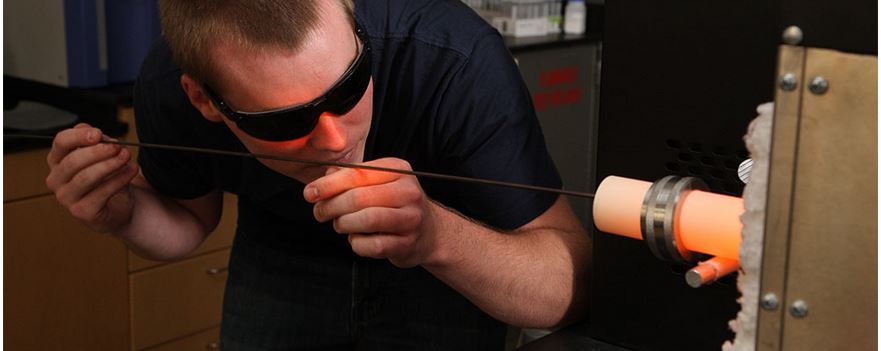Research
Opila Group Research
The Advanced High Temperature Materials research is focused on cutting-edge ceramics, alloys, and coatings exposed to high temperatures and extreme environments such as hypersonic vehicle wing leading edges, combustion engines, and solid-oxide fuel cells.
By investigating the fundamental mechanisms operating at high temperatures through a combination of experimental and characterization techniques, the group's research is exploring the science needed to create higher efficiency engines in both aircraft as well as marine engines. Engine efficiency is essential to lowering fuel consumption. The safety of engine components depends on predictability and protection.
High-Temperature Oxidation Behavior of SiC-based Ceramic Matrix Composites (CMCs)
CMCs are a novel class of materials with HIGH TEMPERATURE CAPABILITIES AND LOW DENSITIES.
Protective Environmental Barrier Coatings for CMCs
SiC CMCs were put into service in commercial aircraft engines in 2016 (EBC-CMC'S). The combustion process in a turbine engine produces a large amount of water vapor along with other particulate matter.
Molten Salt Deposit Assisted Corrosion of CMCs and Alloys
HOT CORROSION: inside of marine-based turbine engines, a new set of materials are needed for the higher temperatures required for increased engine output. The operating environment in marine-based turbine engines causes reactions between turbine components, gaseous engine fuel, and ocean water to be severe.
Ultra-High Temperature Ceramics (UHTCs) for Hypersonic Vehicles
A novel approach to the design of UHTCS is currently being explored in a multidisciplinary university research initiative (MURI) titled "The Science of Entropy Stabilized High Temperature Materials" funded by the Office of Naval Research. At the Opila lab, the oxidation resistance of candidate high entropy carbides and diborides.
Calcium Magnesium Aluminosilicate (CMAS) Degradation of Environmental Barrier Coatings
Calcium magnesium alumino-silicate (CMAS) attack is a pressing issue in the development of environmental barrier coatings (EBCs) for ceramic matrix composites (CMCs). CMAS originates as siliceous debris such as sand, dust, or volcanic ash, which can be ingested into aircraft turbine engines on takeoff, landing, or in flight.
Oxidation of Refractory Alloys
Refractory metals have high melting points and could be used in environments exceeding 1600°C. The Opila Lab is looking for ways to address poor oxidation resistance and high-temperature creep.

Contact Information

Elizabeth J. Opila
Our research focuses on materials for use in extreme environments and can be applied to materials for use in aircraft engines, rocket engines, energy conversion technologies, and thermal protection systems.

